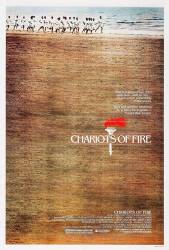Corrected entry: As the challengers are getting ready for the college dash, the starter incorrectly says "Now remember, on the first strike of 12." He should have said "on the first strike of 1" because they start running on the strike of 1 and must finish before the clock strikes 12.
Corrected entry: This 'college dash' that Abrahams impresses Cambridge University by completing - something's not right. The challenge is to get around the courtyard in the time it takes the clock to strike midday. The big deal is that this challenge is supposed to have been around for almost seven centuries and no one has ever completed it successfully. That means that the college dash originated in the early 13th century. There couldn't have been a clock like the one used to time the dash back in the 1200's.
Correction: There could have been manually-rung midday bells.
Correction: The 'College Dash' is not a centuries old tradition: it is a twentieth century tradition. And it is not called 'The College Dash', it is called 'The Great Court Run'. Even so, lots of things are wrong with the scene in question! Keep reading, and I will give you some details. It is a Cambridge tradition for students to try to run around the Great Court of Trinity College while the college clock strikes 12. This would be quite an achievement, because this is not just the largestest courtyard in Cambridge, but possibly the largest courtyard in England. It measures (very) roughly 100 meters (110 yards) north-south and 80 meters (88 yards) east-west: so its four sides cover a grand total of 360 meters (400 yards). (My figures are not 100% mathematically accurate, but I am trying to convey an idea of how far students have to run.) Harold Abrahams (Ben Cross) successfully completes 'The Great Court Run' accompanied by another student, Andrew Lindsay (Nigel Havers). But this scene was not filmed in Trinity College. It was not even filmed in Cambridge! It was filmed in the much smaller 'School Yard' at Eton College (a school in Berkshire, 70 miles from Cambridge) which only measures (very roughly) 45 meters (50 yards) north-south and 65 metres (70 yards) east-west, so its four sides only cover 220 meters (240 yards). Harold Abrahams studied at Cambridge between 1919 and 1923, but he never attempted the Great Court Run: the tradition may not have begun until 1927, when David Cecil (also known as Lord Burghley, the future Marquess of Exeter) was the first person to accomplish the feat (with reliable witnesses watching him). 'Chariots Of Fire' contains another inaccuracy: Abrahams and Lindsay make the run as the clock rings 12 times, but the clock in the Great Court at Trinity College is rather unusual, in that it strikes twice for each hour, and will thus strike 24 times at mid-day (and midnight) : this takes between 45 and 55 seconds. Even so, in over 90 years since 1927, very few people have been able to run a full circuit of the courtyard before the clock finishes striking.






Correction: "the first strike of 12" is the correct way to refer to the first of the twelve "bongs" that indicate noon. Similarly, Dickens, in "A Christmas Carol" (1843) refers to "the last stroke of twelve".